Evaluation method and optimization strategies of resilience for air &space defense system of systems based on kill network theory and improved self-information quantity
Qi Hn , Bo Png , Sen Li , Ning Li , Peng-song Guo , Cheng-li Fn ,Wei-min Li ,**
a Air Defense and Antimissile School, Air Force Engineering University, Xi’an, 710051, China
b Graduate School, Air Force Engineering University, Xi’an, 710051, China
c Information and Navigation School, Air Force Engineering University, Xi’an, 710077, China
d School of Automation Science and Engineering, Xi'an Jiaotong University, Xi'an, 710049, China
Keywords:Air & space defense System of systems Kill network Resilience Self-information quantity Pythagorean fuzzy sets
ABSTRACT Resilience of air & space defense system of systems (SoSs) is critical to national air defense security.However,the research on it is still scarce.In this study,the resilience of air&space defense SoSs is firstly defined and the kill network theory is established by combining super network and kill chain theory.Two cases of the SoSs are considered: (a) The kill chains are relatively homogenous; (b) The kill chains are relatively heterogenous. Meanwhile, two capability assessment methods, which are based on the number of kill chains and improved self-information quantity, respectively, are proposed. The improved self-information quantity modeled based on nodes and edges can achieve qualitative and quantitative assessment of the combat capability by using linguistic Pythagorean fuzzy sets. Then, a resilient evaluation index consisting of risk response,survivability,and quick recovery is proposed accordingly.Finally,network models for regional air defense and anti-missile SoSs are established respectively, and the resilience measurement results are verified and analyzed under different attack and recovery strategies,and the optimization strategies are also proposed. The proposed theory and method can meet different demands to evaluate combat capability and optimize resilience of various types of air & space defense and similar SoSs.
1. Introduction
The air&space defense refers to a combat operation that makes comprehensive use of all combat forces in every aspect of the battlefield such as land, sea, air, space, network, electricity, and cognition to eliminate all kinds of threats.The air& space defense system of systems is massive and integrated. The sub-systems within are heterogeneous and could operate independently, but they are linked together for a shared goal,for example,to obtain the capabilities that a single sub-system cannot attain [1].
At present, the research on air & space defense system of systems mainly focuses on the development of the American and the Russian systems and inspirations learned from their systems [2,3],the trend of development [1,4,5], the situation awareness [6], and the effectiveness evaluation [7]. However, the aforementioned research does not consider the sustainable combat effectiveness of the system of systems in the confrontation environment.In the face of multi-dimensional air and space threats from land,sea,air,space,network, electromagnetic, and cognitive, how the air & space defense system of systems can continuously provide effective capabilities under the influence of enemy attack, self-uncertainty, and external environment; ensure that our key targets are not destroyed; and maintain war potential, key military forces and sustainable combat capability are key issues to be considered in the development of air&space defense in the future.Addressing these issues involves research on the resilience of the air&space defense system of systems. However, such research is still insufficient.
It’s noteworthy that the formation mechanism of combat effectiveness and the form of confrontation of the air defense system have changed dramatically. Therefore, the traditional combat theory is no longer suitable for modern air defense and confrontation. For example, the Defense Advanced Research Projects Agency (DARPA) of the U.S. Department of Defense is actively developing the operational concept of“mosaic warfare”.Its core is a system of distributed deployment capability between manned/unmanned platforms throughout the battlefield. It is no longer necessary for the combat system to rely on the well-designed fixed kill chain. Instead,it can build a suitable one based on the distributed and reconstructed dynamic kill network, which can not only create multiple obstacles for the enemy but also increase the flexibility of the system. Fig.1 illustrates the evolution of kill chain to kill network. In addition, the adaptive cross-domain kill (ACK)network aims to allocate various equipment systems to the appropriate kill chain in real-time by developing assistant decisionmaking software to realize certain applications,and to accomplish dynamic system redistribution according to the combat situation changes to assist all combat systems to select kill network elements from the shared resource, so as to complete multiple concurrent combat objectives. By sharing various resources across different domains and services,the combat system can complete tasks with continuity and effectiveness,thereby improving combat efficiency.There are many other similar operational concepts, yet there is no research to evaluate the impact of such concepts on the resilience of the air&space defense system of systems.It is necessary to conduct modeling and simulation for the development of the air & space defense system of systems which is guided by the operational concept. Furthermore, it is worth studying how to evaluate the operational concept with a scientific method after it has been proposed.However,it is still difficult to quantify the performance of combat network, and the research on the resilience of combat network is lacking.
Resilience refers to the ability of an entity or a system to return to its normal state after experiencing an event that could destroy its current state[8-12].Since the ecologist Holling has introduced the concept of resilience into the field of ecology[13],this concept has been adopted in the fields of power grid [14-17], urban construction[18-23],supply chain[24-27],and transport system[28-30].For example,Xing Pan et al.not only proposed resilience model and recovery strategy for SoSs like transportation network and data transmission network but also utilized actual data to study real cases [31,32]. Jiaxin Zhang et al. have conducted a case study of COVID-19(Coronavirus Disease 2019) by considering community centered public safety resilience under public emergencies [33].
Similar to these fields, there are internal and external disturbances in the field of military, except that most external disturbances in the latter are man-made disturbances with high intensities,for example,hostile behaviors.At present,the research on resilience in the military field mainly focuses on the command information system [34-39], the unmanned aerial vehicle (UAV)swarm system [40], and the space system[41,42].
Qiong Cui et al.defined the resilience of the network command information system as the ability to reduce the probability of risk on its own initiative, reduce damage to system function, and quickly recover to the original state or evolve to a new equilibrium when facing system degradation induced by risks through a dynamic and flexible adaptive adjustment, in order to keep the normal functioning of the system and the smooth completion of the tasks [37,38].
Lingfeng Gu et al.defined the resilience of a UAV swarm system as the ability to reduce the loss in time and return to the expected performance as quickly as possible in case of disturbance (such as electromagnetic interference and failed components) [40].
Yunming Wang studied the ability to withstand damages to a command and control network by using the entropy of combat links. Entropy measures the uniformity of the system energy distribution and reflects the stability of the object and the direction of the change in the system. The more uniform the energy distribution, the greater the entropy, and vice versa [43].
The concept of resilient space was first proposed in the white paper “resiliency and disaggregated space architectures” published by the US Space Command. It holds that “resilience” refers to the abilities of a system to continuously provide capabilities in case of system failures,environmental challenges,and hostile actions.These abilities include threat containment, system robustness, system reconstruction,and capability recovery[44].Table 1 summarizes the characteristics of resilience in different military systems.

Table 1 Characteristics of resilience in different military systems.
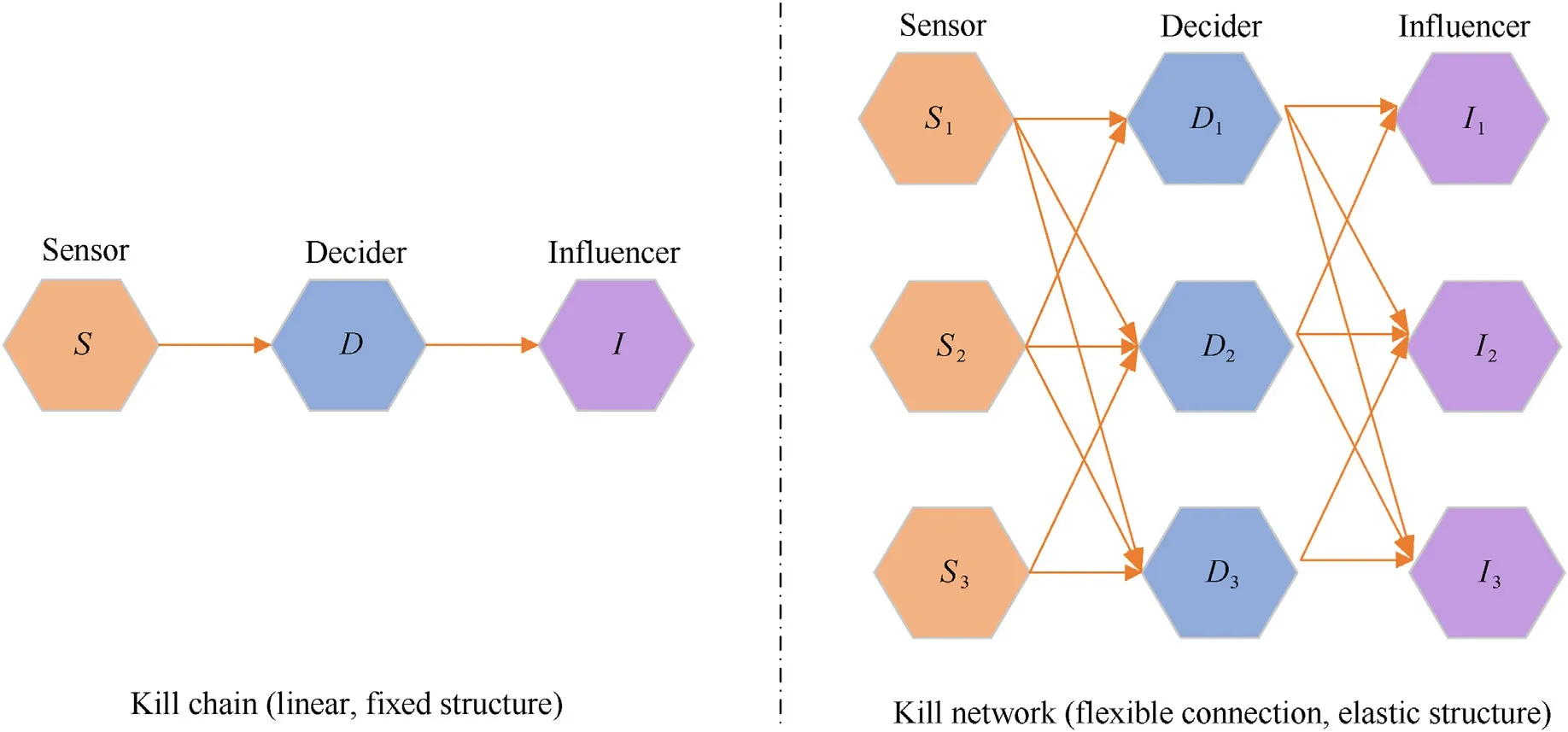
Fig.1. The evolution of kill chain to kill network.
The above definitions are instructive to the resilience of the air&space defense system of systems,but it cannot be fully applied to an intense confrontation system involving land, sea, air, space,network, electricity, and cognition. Air & space defense system of systems is the key target of the enemy in war.The key to the system effectiveness is to reduce the impact of high-intensity external human disturbance, for example, enemies’ attacks, as much as possible in an environment with air and space confrontation,so as to maintain continuous and effective combat capability. The research on the resilience of the air & space defense system of systems is of great significance to national security.To sum up,we define the resilience of the air&space defense system of systems as follows:the resilience of the air&space defense system of systems refers to the ability of the system to withstand the disturbance of abnormal factors such as attacks, interference, and failures, and to reduce the impact on the system performance after being disturbed. Through adaptive optimization of architecture and repair of subsystem functions,the system can adapt to changes and complete the designated air & space defense combat tasks.
One traditional modeling method for defense system of systems is DoDAF (Department of Defense Architecture Framework). However, this method has certain limitations in that it lacks a quantitative description of the system and is difficult to reflect the relationship between nodes. The complex network theory, super network theory and so on can fill up the above gaps.In recent years,the research on the network theory has made breakthroughs, for example, it combines the complex theory with the network, extracts the essential characteristics of complex large-scale systems through physical statistics,simulation,and dynamic evolution,thus providing an evolutionary modeling idea for the system in complex situations [45]. Jeff Cares studied the basis of the network centric warfare,namely distributed network warfare,and for the first time defined the model of distributed network warfare using rigorous mathematical formulas [46,47]. He not only analyzed the characteristics of the network forces and evaluated the effectiveness of the network operations, but also inspired the following series of studies [48].
Xing Pan et al. conducted a resilience-based importance measure analysis to optimization the structure of the SoS [13]. The number of operation loops was used as the performance indicator,and calculated by an approximate algorithm based on eigenvalue of the adjacency matrix[13].Danling Zhao et al.proposed a modeling method based on heterogeneous networks and found that the number of attack links with actual semantic information is more effective for evaluating the structural robustness of weapon SoSs[49]. However, their studies did not consider the impact of equipment performance or the heterogeneity of the relationship between equipment on the SoS.The differences between the combat system nodes cannot be easily distinguished, and the complex relationships between them are treated as the same, thus being unable to reflect the actual war. When the heterogeneity within the system is strong or accurate evaluation is required,the methods no longer apply.
Information entropy expresses the degree of uncertainty of random variable value, which means describing the amount of information in variables. Huiling Shang modeled the armaments system-of-systems operation networks and studied capability evaluation [50]. Chengkun Luo proposed an evaluation method of equipment’s contribution rate to system-of-systems based on operation loop and self-information quantity [51]. Their research considered using uncertainty to measure combat effectiveness,decomposing the combat process into multiple nodes, using uncertain self-information to measure the degree of each node's completion of tasks, modifying the information entropy function,and obtaining an evaluation method called self-information quantity which is suitable for solving combat effectiveness. Danling Zhao proposed two assessment methods of contribution rate of weapon and equipment system-of-systems capability based on operation loop by combat mission oriented,and effectiveness based on simulation by combat process oriented [49]. However, their research mainly relies on quantitative calculation for the capability of equipment nodes and edges. So it is difficult to deal with the highly uncertain indexes that cannot be quantitatively calculated,yet SoSs are usually complex giant systems with complicated structures,compositions and numerous indicators,which leads to a lot of indexes that cannot be accurately and quantitatively expressed.
To handle uncertain information, Zadeh proposed fuzzy sets in 1965 [52]. Followed by Zadeh's research, intuitionistic fuzzy sets[53], hesitant fuzzy sets [54,55] and Pythagorean fuzzy sets (PFSs)[56,57] were expanded to overcome some short comings of fuzzy sets. Pythagorean fuzzy sets accept that the sum between membership degree and non-membership degree is more than 1, and limit the corresponding square sum to 1 or less than 1. In most cases,linguistic qualitative information is very helpful because they are close to the reality of evaluation. Therefore, Pythagorean fuzzy sets combined with linguistic term sets have great advantages in dealing with fuzziness and uncertainty.
To overcome the aforementioned deficiencies and to enrich the study of resilience of combat SoSs like air & space defense, the theory of kill network is established by combining the super network and the kill chain, the resilience of air & space defense system of systems is studied by two targeted evaluation methods in order to suit different circumstances and optimization strategies are proposed in this paper.
The rest of this paper is organized as follows. In Section 2, the kill network theory based on super network and kill chain is proposed, the modeling method of kill network nodes and edges is defined,and the qualitative and quantitative evaluation model and methods for the combat capability of the air & space defense SoSs are proposed based on improved self-information quantity and linguistic Pythagorean fuzzy sets. In Section 3,the method of resilience evaluation based on the kill network for the air & space defense SoSs is discussed. Two cases are considered by us: (a) Kill chains are relatively homogenous or only rough calculation is required; (b) Kill chains are relatively heterogenous or accurate calculation is required. Two capability calculation methods are proposed respectively.In Section 4,the hypothetical scenarios of air defense and anti-missile operations are designed, the resilience of the air & space defense SoSs based on the number of kill chains is studied under various attack strategies, and the resilience of the anti-missile SoSs is investigated by using the combat capability evaluation method of improved self-information quantity. According to the analysis of experimental results, optimization strategies and measures to improve the resilience of the air & space defense SoSs are proposed.In Section 5,the novelties of the paper are summarized and the key issues and directions of future research on the resilience of the air & space defense SoSs are analyzed.
2. Construction of the kill network model for air & space defense system of systems
2.1. Theoretical basis
2.1.1. Basics of complex network
Watts and Strogatz pointed out in 1998 [58,59] that during the transition from a completely regular network to a completely random network, a network topology model with small-world characteristics could be obtained by adding a little randomness,which is now often called the WS small-world model. The smallworld characteristic means that the network exhibits a large clustering coefficient and small average distance simultaneously, as shown in Fig. 2. When the reconnection probability is p = 0, the network is completely regular; when p = 1, the network is completely random. The transition from a completely regular network to a completely random network can be realized by adjusting the value of parameter p.
In 1999, Barab′asi and Albert proposed a scale-free network model for which the clustering coefficient is very small, and the degree distribution follows the power law[60].Its expression is as follows:
where γ>0, generally taking a value between 2 and 3.
2.1.2. Super network theory
With the development of complex network theory, American scientist A.Nagurney proposed to call a network model higher and beyond existing networks as the super network,thereby describing the interwoven and nested network structure.However,there is no generally accepted definition of super network. A relatively recognized concept of super network refers to a network composed of points, lines, and flows, which is based on but higher than existing networks. It is a network of networks that is large, complex, and congested [61]. According to the graph theory, the supergraph can be used to describe the super network, which features edges that can connect more than two nodes.
Definition of supergraph. Let V ={v1,v2,…,vn} be a finite set,ei= {vin,vi2,…,vij}(i = 1,2,…,m), and E = {e1,e2,…,em}. If
then the binary relation H =(V,E) is called a supergraph where vi(i=1,2,…n) represent the vertex, and ei(i=1,2,…m) denotes the edge. It is generally believed that a network that can be described by a supergraph is a super network.
The difference between a super edge in a supergraph and an edge in a simple graph is that the latter can only represent the simple binary relationship between two nodes connected by this edge, whereas the former can represent the polynary relationship between two,three,or more nodes in the supergraph.
The super network theory can describe the relationship between nested networks, but the research on this theory is still in the primary stage, focusing on concept exploration and model establishment. The heterogeneity of super network nodes and the multiplicity of edges result in network characteristics that are different from those of single-layer and homogeneous networks in general. Therefore, the robustness and splitting and clustering performance of the super network model must be reexamined in depth. In addition, the applications of super network in military fields need to be expanded, and the studies on resilience of air &space defense system of systems are still rare.
2.1.3. Applicability of super network theory in air & space defense system of systems
The architecture for the air&space defense system of systems is a networked structure,which can be described by a network model.The nodes and edges in the network can effectively describe the interaction between the constituent elements. However, most of the existing complex network models model nodes and edges with single properties. In other words, the types of nodes and edges in the network are singular,which is a simplification of reality aiming for convenient analysis of complex system structures. The characteristics of the various types of nodes in the air & space defense system of systems architecture are varied, and the interactions among them are also different. For example, the interaction between sensor nodes is collaborative, while the interaction between the command and control node and the sensor node is different since the former controls the latter. It is difficult for an ordinary network model to distinguish the connections between the two heterogeneous networks. Since the structure and the capability are complementary to each other, when modeling architecture for the air & space defense system of systems, if the network model can express the capability attributes and their correlations, the influence of structure on capability can be made clearer, which is helpful to finding the path of architecture evolution for the system of systems. Although the capability network belongs to virtual networks and the combat equipment network in air & space defense is a physical one, this kind of physical-virtual network can still be described by the super network model.
The characteristics of the air&space defense system of systems that are applicable to the super network include
(1) Networks are nested or contained in the network.
(2) Multi-layer characteristic. The network of the air & space defense system of systems can be divided into the detection network, command and control network, and firepower network.
(3) Hierarchical characteristic.The air&space defense system of systems has obvious hierarchies, such as the national and theater air & space defense system of systems.
(4) Multi-dimensional traffic. The traffic on the communication link includes information of command and control, early warning, and situational interaction.
(5) Multiple attributes/criterions. The information can be transmitted wirelessly or in a wired manner, and the issues of information integrity and timeliness are considered as well.
(6) Congestion.Due to bandwidth limitations and the increase in information demand, information congestion is possible on the communication links of the air&space defense system of systems.
(7) Conflict of global and local optimizations.When each node of the air&space defense system of systems considers its own information needs, conflicts between the individual and the whole emerge in the process of organizing operations.
2.1.4. Theoretical basis of kill network in the air & space defense system of systems
According to the three basic elements described in the theory of mosaic warfare, which constitute the kill chain, kill network, and effects web, this paper briefly divides the air defense combat elements into detection and perception elements, command and decision elements, and interception and attack elements. The complexity of the architecture for the air&space defense system of systems is not only reflected in its huge number of nodes,but also in the multidimensional nature of the heterogeneous nodes.A node of the air&space defense system of systems may possess different attributes, display different abilities in the system, and then correlate with each other to constitute different functional networks. The idea of attribute inheritance can be adopted in which the multidimensional attributes (for instance, command and control,detection,and firepower)of the smallest operational unit-level node in the system of systems are used to describe the various functions like command and control,detection,and interception in different levels of operational units (basic operational unit, arms operational unit, coordinated operational unit, and joint multidomain operational unit). In other words, the attributes of the operational unit are the functional attributes inherited from its internal equipment systems.
The kill network model of the air defense system of systems is defined using the idea of supergraph. The kill network model is composed of nodes and super edges that can be described by the following.
Nodes:Let the unit set in the air defense system of systems be V,which is a set of the three types of heterogeneous basic system units, i.e., V = {S,D,I,T}.
The resilience model of the air & space defense system of systems includes the sensor nodes (sensors) Si(i = 1,2,…,I), interceptor nodes (influencers) Ij(j = 1,2…J), command and control nodes(deciders)Dm=(m =1,2,…M),and target nodes Tn(n =1,2,…N).These nodes and the corresponding edges form a networked structure,which is typically represented by a directed graph G =(V,E). The attribute sets of the node sets and the interaction relationships can also be included as needed.V ({Si(i =1,2,…,I),Ij(j =1,2…J),Dm(m =1,2,…M),Tn(n =1,2,…N)})is a non-empty finite set of various nodes in the network of the air & space defense system of systems, and E ({〈Tn(n=1,2,…N),Si(i=1,2,…,I)〉,〈Si(i=1,2,…,I),Dm(m=1,2,…M)〉,…〈Dm(m=1,2,…M),Ij(j=1,2…J)〉,〈Ij(j=1,2…J),Tn(n=1,2,…N)〉}) is a finite set of edges in the system of systems.
The edge in a simple graph can only represent the relationship between the two nodes connected by it, which is a simple binary relationship. The super edge in a supergraph, however, can represent the various multivariate relationships between different types of nodes. The relationships between nodes in the air defense system of systems include command and control,information support,and collaborative decision-making. To deal with these relationships,we must first figure out the key to the completion of system of systems mission, namely the closed operation of the kill chain.The kill chain refers to an orderly chain composed of interdependent links in the process of attacking targets.
A standard kill chain of T→S→D→I→T is the simplest operational loop in the operation. Due to the complexity of air defense operations, there are complex interactions among the three types of nodes (sensors, deciders, and influencers) in the air defense operations network.
Generalized kill chain:A generalized kill chain is a complete kill loop composed of multiple sensors, deciders, influencers, and a single target. For example, to improve the operational efficiency and accuracy, when the decider receives target information detected and reported by the sensor, it fuses and distributes the information.Multiple command and control nodes make decisions cooperatively and send attack instructions to the influencers, thus expanding the standard kill chain into a generalized one. Fig. 3 illustrates the kill chain mode.
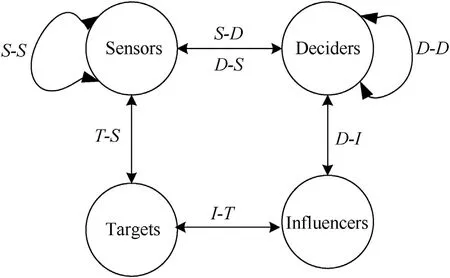
Fig. 3. Kill chain mode.

Fig. 4. Schematic diagram of the kill network of an air defense system of systems.
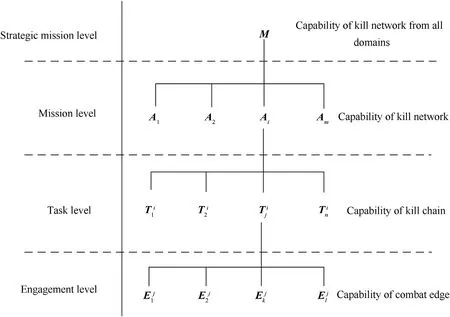
Fig. 5. Hierarchical abstraction of the operational concept by global kill network.
Operational link:When the sensor finds the target,it sends the target information to the decider, which then transmits the information to the nodes on the same level or reports/issues it to superior/subordinate nodes. The collaborative decision of multiple deciders forms the operational command, which is sent to the influencers that attack the incoming target. In this process, information is transmitted through several operational links.
The air defense combat system of systems is consisted of numerous (anti-) kill networks established according to the strategic mission of air defense. The operational hierarchies are abstracted based on the operational concept,which can be divided from top to bottom into the mission level, task level, and engagement level, corresponding to the kill network, kill chain, and combat edge, respectively, as shown in Figs. 4 and 5.
The air&space defense system of systems established under the guidance of the operational concept of air defense kill network reshapes the traditional air & space defense equipment system of systems following the principles of weapon system functions decoupling, intelligent dynamic element reorganization, and reasonable resources allocation in the process of operation. This system of systems can establish a dynamic network with uncertain functions for flexible operations and employs the kill network theory for modeling.
2.2. Modeling of kill network nodes and edges in the air & space defense system of systems
2.2.1. Modeling of nodes
The various types of equipment are the entities of the air defense combat system of systems. When modeling the combat system of systems based on the theory of combat ring or complex network, the nodes are generally abstracted into three categories:early warning,decision-making,and strike,and one equipment has only a single function by default. However, with the increase in network construction requirements of the equipment system of systems, “weapon system functions decoupling and intelligent dynamic element reorganization” has gradually become the mainstream approach of the future air defense combat system of systems. The requirements for coordinated engagement of air defense systems of systems such as multi-point positioning,“A-shot-B-guide”,and relay guidance have become increasingly prominent.For example, an aircraft in fighting can provide detection and tracking information to ground air defense equipment under certain conditions. If it is simply expressed as a certain type of nodes,a comprehensive evaluation of equipment is impossible.If it is expressed as multiple types of nodes, a two-way looped graph will be formed in the combat network,which does not conform to the main feature of the kill chain that the kill network is formed through information and energy interaction. To adapt to this development trend of future air defense equipment system of systems,the method of abstracting the equipment layer and entity domain into the equipment function layer and function domain is proposed. A single equipment can be divided into multiple equipment modules according to its functions in the combat system and abstracted into several types of nodes.
According to the improved node modeling method, the equipment in the air & space defense system of systems can be abstracted as nodes with a single function. According to the relevant research [50,51], the tactical and technical indexes related to the kill network modeling are determined first,as shown in Table 2.

Table 2 Tactical and technical indexes related to the kill network modeling.
2.2.2. Modeling of edges
According to the analysis of Danling Zhao et al.[49],the number of kill chains with actual semantic information is more effective than natural connectivity,a common index in the complex network theory, for assessing the changes in the survivability of weaponry.Analysis of the network modes of the combat network of the weaponry system of systems reveals that T-S,S-D,D-I,I-T,S-S,D-D are common edges, which are discussed in detail below.
(1) Edge T-S. Edge T-S represents the unidirectional edge from the enemy target to the node of the early warning detection system of systems formed by the early warning monitoring and tracking of the enemy target by our early warning detection system of systems. It can be expressed in formalized language as
where T*is the set of enemy targets and S*is the set of early warning detection system of systems nodes.
Edge T-S mainly considers the capabilities of discovery PfindTS,identification PTtrSack, target tracking PTreScof the early warning detection system of systems nodes and the anti-reconnaissance capability of enemy targets.
where k(0 (2) Edge S-D. Edge S-D is the unidirectional edge of the transmission information flow from the node of the early warning detection equipment system of systems to the node of the command and control equipment system of systems. It mainly considers five indexes related to the communication capability,i.e.,communication connectivity P1SD,information transmission rate P2SD, communication quality P3SD, communication capacity P4SD, and communication delay P5SD. The distance between S-D edges is dSD. (3) Edge D-I. Edge D-I represents the unidirectional edge of the information flow from the command and control equipment system of systems node to the influencer equipment system of systems node.It can be expressed in formalized language as where D*is the node set of our command and control system of systems and I*is the node set of our influencer equipment system of systems. It is mainly measured by the response time P1DI,throughput P2DI, accuracy P3DI, communication connectivity P4DI,transmission rate P5DI, communication quality P6DI, communication capacity P7DI, and communication delay P8DI. The calculation methods of the communication connectivity, transmission rate,communication quality, communication capacity, and communication delay are the same as those of edge S-D. (4) Edge I-T.Edge I-T represents the unidirectional edge from the influencer to the target formed by the influencer equipment system of systems node striking the enemy target within its damage range. It mainly considers the kill capability of the influencer and the survivability of the target. The kill methods can be divided into hard and soft ones.In the air&space defense system of systems, hard kill is mainly caused by the missile warhead to the enemy target;whereas soft kill mainly refers to the loss of target combat capability caused by the jamming of our electronic jamming equipment node.The fire attack edge formed by hard kill is denoted as I1-T,which can be described by indexes such as the hit probability P1I1-Tand damage probability P2I1-T. where tITis the action time of influencer I against enemy target T;R(d′IT)is the membership function of the damage from I1to enemy target T when the distance between the impact point and T is d′IT. The electronic interference edge formed by soft kill I2-T can be described by the interference probability and suppression rate. (5) Edge S-S.Edge S-S refers to the unidirectional edge formed by information sharing between sensors.It mainly considers the communication capability between sensors, which can be measured by the communication connectivity P1SS, transmission rate P2SS,communication quality P3SS,communication capacity P4SS,and communication delay P5SS.Their calculation methods are the same as those of edge S-D. (6) Edge D-D. Edge D-D represents the unidirectional edge between deciders formed during cooperative command. The information processing and communication capabilities of the deciders are mainly considered.It can be measured by 8 indexes,i.e.,the response time P1DD,throughput P2DD,accuracy P3DD,communication connectivity P4DD,transmission rate P5DD,communication quality P6DD, communication capacity P7DD,and communication delay P8DD. The calculation methods of P1DD, P2DD, and P3DDare as follows: The calculation methods of the other indexes are the same as those of edge S-D. Kill network is composed of many kill chains in which the completion of combat activities depends on nodes and edges to play their respective roles.The capability of the system of systems to complete combat tasks typically has strong uncertainty. This uncertainty is caused by the uncertainty of nodes and edges completing tasks. Information entropy reflects the amount of information needed to describe random variable X and can well describe the uncertainty of information. Self-information quantity is used to measure the uncertainty of the system by the average information in the probability distribution. The air defense kill chain can usually be decomposed into multiple nodes and edges that involve many factors that affect the combat capability. The lower the uncertainty that these factors meet the requirements of combat capability, the stronger the combat capability.The uncertainty in the operation that affects the air & space defense system of systems can be measured by the membership degree that meets the capability requirements. The greater the membership degree,the greater the level of satisfaction for the combat capability requirements, and the less the uncertainty to the operation. It is assumed that there are n index factors affecting a node in the kill chain.For a certain index,the membership degree is 1 when the requirements of combat capability are fully met, and 0 when they are not. Let the membership degrees and weights of these n index factors be R1,R2,…Rnand ω1, ω2, …ωn, respectively, and transform the entropy function to obtain the weighted selfinformation quantity of the node, i.e., In a complete kill chain, the uncertainties of the sensor, decider,influencer, and target for the system of systems to complete the mission are defined as I(Sj), I(Dm), I(In), and I(Ti) respectively. The uncertainties for mission completion of combat activities represented by different types of edges are defined as I(ETiSj), I(ESjDm),I(EDmIn),I(EInTi),I(EDmSj),I(ESkSl),and I(EDpDq),respectively.It is worth noting that the nodes in the kill chain with information sharing and command coordination relationships can be considered parallel.Then, The uncertain self-information quantity of the whole operational ring includes two parts:nodes and edges,which are defined as The uncertain self-information quantity of the j-th kill chain passing through target Tiis Thus, the effectiveness of the system of systems for target i is The effectiveness of the combat system of systems for multiple targets is where ωiis the weight of target Ti, which can be determined according to its threat to us and its importance to the enemy system of systems. For the indexes that can be quantified by data,the evaluation of combat capability of the air & space defense system of systems is calculated by the membership formula, which can refer to the reports of Shang and Tang [50,62]. Pythagorean fuzzy sets theory is a generalization of the intuitionistic fuzzy sets theory [53,56]. It allows the sum of the membership degree and non-membership degree to be larger than one but limit that their square sum is equal to or less than one. The ability of Pythagorean fuzzy sets to model such uncertainty of evaluation is much stronger than intuitionistic fuzzy sets. So Pythagorean fuzzy sets theory is a more powerful tool for expressing uncertain information during the evaluation period. The linguistic and qualitative information is usually more useful and close to the evaluation reality. Because some evaluation problems are very difficult to perform quantitative evaluation and more appropriate for qualitative assessment. Based on the above discussion, for those that are difficult to quantify,the comprehensive evaluation method based on linguistic Pythagorean fuzzy sets is used for experts' assessment. Taking the target as an example, for the non-quantifiable indexes such as the stealth coefficient, anti-optical coefficient, anti-radar coefficient,anti-infrared coefficient, and survivability coefficient, the expert scoring method is used to determine the membership degrees by comprehensive judgment of Pythagorean fuzzy sets. For the basic theory of Pythagorean fuzzy sets and the relevant comprehensive evaluation method, refer to Han's paper [63,64]. The indexes without data quantization were assessed using linguistic hesitant Pythagorean fuzzy numbers, with membership degrees and non-membership degrees from linguistic term sets as follows: The other indexes that are convenient to quantify or have empirical formulas,such as the maneuvering speed,early warning time, and electromagnetic received power, are calculated by the empirical formula of membership degree. The weights of the indexes are calculated by the analytic hierarchy process. Their membership functions are Enemy missile T1has a maneuvering speed of 7000 km/s and an early warning time of 0.08 s; whereas enemy missile T2has a maneuvering speed of 4000 km/s and an early warning time of 0.06 s. The calculation methods of membership degrees for the other nodes are similar, so they are not listed here. The air defense kill chain is a complete kill path from reconnaissance and early warning to target destruction, each representing a target kill method. More kill chains for a target means more kill methods for it,so the whole air defense system of systems can better maintain its original function and exhibit better resilience. The number of kill chains represents the redundancy of alternative operations. The more the number of kill chains, the higher the redundancy, and the less the air defense system of systems is affected.Therefore,the number of kill chains can be used to measure the system of systems resilience. Matrix method of kill chain calculation: When the scale of the equipment system of systems is large, it becomes difficult to calculate the kill chains by hand. Under these circumstances, the kill chain matrix can be calculated automatically according to the transfer matrix and arrival matrix. (1) Transfer matrix.AIJis the transfer matrix of node types I and J about network mode I →J.If there is an edge between nodes i∊I and j∊J,then element aij=1;if there is no edge between them, aij= 0.Note that when the nodes belong to the same type,the transfer matrix in essence is the adjacency matrix in the homogeneous network. (2) Arrival matrix. AIJand AJKare called adjacent transition matrixes, and the arrival node type of AIJis the same as the starting node type of AJK. Through the transfer between adjacent transfer matrixes,we can obtain AII=AIJ*AJM*…APIwhere AIIis called the arrival matrix of node type I. The transfer of nodes in the kill chain can be obtained according to the transfer matrix,thereby calculating the number of kill chains.Taking a typical kill chain T→S→D→I→T as an example, the arrival matrix ATSDITof T under the kill chain can be obtained as Here,the number of kill chains of this type is where|T|denotes the number of target nodes.The total number of kill chains is the sum of the number of kill chains in each type. 3.2.1. Dimensions of resilience In a complex confrontation environment, the mission of air &space defense to achieve sustained and effective deterrence and check against threats, which inevitably requires the system of systems to effectively predict,resist,absorb,respond to,and adapt to the impacts of the environment.Sufficient resilience is essential to responding continuously and effectively to various threat targets in required time and space.Therefore,it is necessary to consider the resilience analysis and measurement method of the air & space defense system of systems in complex confrontation environments.The resilience evaluation of the air & space defense system of systems should be considered from at least two dimensions:structural resilience and temporal resilience. (1)The structural resilience of the air&space defense system of systems characterizes the significant change in structure due to node or edge failure when the system faces external attacks or internal failures.A resilient space defense system of systems needs to make dynamic response to the structure according to the change and use the functional redundancy of other nodes to make up for the performance loss of damaged components and quickly recover the system of systems. Isolated nodes or nodes that cannot form a strike loop are judged as failed nodes in the system of systems.Fig. 6 shows the dynamic reconstruction of the kill chain. (2)The temporal resilience measures the response and recovery capacities of the air & space defense system of systems in time.When the air & space defense system of systems is faced with internal failures or enemy attacks, it should be able to recover its response to the decider and combat capability within a certain time frame,reaching the steady state in a short time. To measure the resilience of the air defense system of systems,it is necessary to determine the system of systems capability at each stage. As shown in Fig. 7, t0represents the initial moment of air defense operation, tadenotes the time when the enemy starts to attack, tdis the end time of the decline in capability of the air defense system of systems, tris the start time for system of systems capability recovery, tsindicates the time when the system of systems completes recovery,and terepresents the end time of the air defense operation. Fig. 6. Dynamic reconstruction of the kill chain. Fig. 7. Schematic diagram of air defense system of systems resilience. 3.2.2. Measurement model Multiple kill chains are formed between the functional nodes of the air & space defense system of systems to support the completion of its mission.Therefore,the type and number of kill chains can reflect the capability of the air&space defense system of systems to complete missions,which is recorded as MC(t)[37].The air defense system of systems has a complex structure consisted of subsystems,in which each subsystem has its own parameters such as the failure rate,survival rate,repair rate,redundancy rate,mean time between failures(MTBF),and mean time to repair(MTTR).These parameters constitute the resilience influencing parameters of the whole air defense system of systems. The functions required by the air & space defense system of systems to complete the defense mission at time t are F(t)={f1,f2,…fk} in which fkrepresents the function chain of the system of systems. Set the system of systems function chain as L(t)={l1,l2,…lm} at t, use D(t)=(d1,d2,…dk) to indicate the degree to which the system of systems meets the task requirements at t,and let di,i∊{1,2,…k}be a Boolean number.When di=1,∃lj∊L(t),j∊{1,2,…m} that makes lj= fi, otherwise di= 0, that is, If ∀fi∊F(t),∃lj∊L(t)→fi,then the air&space defense system of systems meets the operational mission requirements at t, and|D(t)|=m holds. Generally, if the air & space defense system of systems is under attack, |D(t)|≤m, which means the system of systems cannot fully meet the defense mission requirements.Therefore,the mission capability of the air&space defense system of systems can be expressed by the degree to which the system of systems meets the operational mission requirements. 3.2.2.1. Risk response capability. The risk response capability R refers to the task completion capability of the system of systems in the whole task stage.According to the analysis,R can be expressed by the normalized value of cumulative task capability within t0-te, i.e., 3.2.2.2. Survivability. The survivability K refers to the ability of the air defense system of systems to complete tasks after being attacked, which can be expressed by the negative exponential function of the degradation degree k and the degradation rate vkof the system of systems mission capability, i.e., where the degradation degree is calculated byand the degradation rate is calculated by 3.2.2.3. Quick recovery capability. The recovery capability P refers to the ability of the system of systems to complete tasks through recovery strategies such as node backup and reconnection, which can be expressed by the exponential function of the recovery degree p and the recovery speed vpof the system of systems mission capability, i.e., where the recovery degree is expressed byand the recovery rate is expressed by The overall resilience of the air & space defense system of systems is the concentrated embodiment of the risk response, survivability, and quick recovery capability, which is expressed by Z =Φ(R,K,P). The specific process is shown in Fig. 8. Fig. 8. Flow chart of calculating the overall resilience. Two cases when kill chains exist in the kill network are considered by us:(a)Kill chains are relatively homogenous or only rough calculation is required; (b) Kill chains are relatively heterogenous or accurate calculation is required.For Case(a),it can be assumed that there is no significant difference between the combat capability of each kill chain in the kill network, and the number of kill chains that can be formed in the kill network can be directly used to measure the kill network capability. The transfer matrix and arrival matrix, which can be applied to a large-scale equipment system of systems' kill chain matrix, are used for automated calculation. In this case, an accurate mathematical model of nodes and edges is not required, and thus this model is convenient and swift.For Case(b),if the combat capability of each kill chain in the kill network shows a large difference due to the difference between nodes and edges,then it is necessary to use the model of nodes and edges,combat capability evaluation model,and evaluation method to calculate the capability of the kill network to obtain more accurate results. Nodes and edges shall be modeled first, and then the capacity can be evaluated using a selfinformation-based calculation method. So the proposed methods can meet the modeling and resilience evaluation needs of different types of kill networks.The flow chart of the entire method for modeling and evaluating for two types of SoSs is shown in Fig. 9. To verify the proposed method and evaluate the resilience of the traditional platform-based air defense system of systems, the air defense system of systems under the guidance of the kill network operational concept and the anti-missile system of systems based on kill network,the network topology is first established and then experiments are conducted, optimization strategies are also proposed in this section. It’s noteworthy that,due to the existence of relatively consistent nodes of the same type in the SoSs,the simple combat process,and the relatively homogenous kill chains, the regional air defense combat system of systems belongs to Case(a). For the anti-missile system of systems, because the nodes in the system are of greatly different types,the combat process is complicated,and the types of kill chains are diverse, an accurate calculation is required, thus it belongs to Case(b).As a result,we separated air defense modeling and anti-missile modeling and used different analysis processes which are shown in Fig. 9 in the case study. Fig. 9. Flow chart of the entire method for modeling and evaluating. 4.1.1. Network topology modeling of the platform-based regional air defense combat system of systems The components of the traditional platform-based regional air defense combat system of systems are set as follows. (1) One regional air defense command and control center is configured. (2) The regional air defense command and control center has three tactical air defense missile command and control centers. (3) Each tactical command and control center is equipped with one target indication radar and three air defense missile battalions. (4) Each anti-aircraft missile battalion includes one guidance system and one launch system without configuring a separate target indication radar. Four groups of enemy targets attack the key defense area from various directions. By analyzing the architecture of the air defense operation under this background,the numbers of the various nodes are obtained as NT=4,NS=12,ND=4,NI=9,and the whole air defense combat system of systems is abstracted as an operation network composed of 29 nodes.It is assumed that the regional air defense decider D1is able to command beyond its level, replacing the tactical command and control center in function.Moreover,the command and control information can be reported/issued between D1and the three tactical command and control centers, so operational orders can be formed through collaborative decision-making and sent to the influencers(but it is assumed that the information is not reported/issued repeatedly).Assuming that the platform-based regional air defense combat system of systems is limited by the basic communication network, so the sensors between various air defense missile battalions cannot share information, and the tactical decider can only command its own target indication radar and guidance radar. The tactical decider D2is equipped with sensors S1,S2,S3,S4and influencers I1,I2,and I3;the tactical decider D3is equipped with sensors S5, S6, S7, S8and influencers I4, I5, and I6;and the tactical decider D4is equipped with sensors S9,S10,S11,S12and influencers I7, I8, and I9. Restricted by attack direction and deployment location, it is assumed that Target 1 can only be detected by S1, S2, S3, and S4and attacked by I1, I2, and I3; Target 2 can only be detected by S5,S6,S7,and S8and attacked by I4,I5and I6;and Targets 3 and 4 can only be detected by S9,S10,S11,and S12and attacked by I7, I8, and I9. The topology of the platform-based regional air defense system is shown in Fig.10. Fig.10. Topology of the platform-based regional air defense system. 4.1.2. Network topology modeling of the regional air defense combat system of systems based on kill network For convenient comparison,the same type and number of nodes are configured for the network-based regional air defense combat system of systems,including 4 tactical command and control centers,12 radars,and 9 launch systems,shown in Fig.11.Each node is connected through the basic communication network to intercept 4 batches of targets in the regional air defense zone.Limited by the node capacities and regional conditions in actual combats, it is assumed that the decider can simultaneously process the information of up to 8 sensors and command 6 influencers. Limited by the target attack direction,the deployment locations of the sensors and interceptors, and the kill areas of the interceptors, Target 1 is generally detected by S1,S2,S3,and S4and attacked by I1,I2and I3;Target 2 is generally detected by S5,S6,S7,and S8and attacked by I4,I5,and I6;Targets 3 and 4 are generally detected by S9, S10, S11and S12and attacked by I7,I8,and I9.It is assumed that as long as one of the sensors detected the target, sufficient target indication and guidance information can be provided via the basic communication network in the regional air defense combat system of systems based on kill network. In other words, the sensors are not connected,but the information in the sensor network can be freely shared via the basic communication network, so the discovery by one node can be made known to the whole network,improving the target detection ability. Fig.11. Topology of the regional air defense system of systems based on dynamic kill network. 4.1.3. Network topology modeling of the anti-missile system of systems based on kill network The network model of the anti-missile equipment system of systems is constructed, which is composed of enemy missile T1,enemy missile T2, Pave Paws early warning radar S1, X-band fire control radar S2, space-based infrared system S3, anti-missile command and control center D1, information processing command and control platform D2, anti-missile command center D3,ground-based interceptor missile I1, Patriot PAC-3 interception system I2,and Aegis warship I3.As shown in Fig.12,the anti-missile operation process can refer to Shang's paper [50]. Fig.12. Combat network of the anti-missile weaponry system of systems. Suppose that these two types of air defense systems of systems encounter the same type of attack in an air defense operation. Set the initial time as t0=0,the end time as te=1800 s,the enemy's attack time as ta=600 s, and the attack intensity as δ = 0.1.Complete failure of the system node under attack occurs at td=840 s, and the system recovers at tr= 960 s. It is assumed that the air defense system of systems initially meets the combat mission requirements,i.e.,KC(t0) =1.The total number of kill chains required by the air defense system of systems to complete the combat mission is the same as that of the platform-based regional air defense system of systems, i.e., m = KC(t0) = 156. According to the attack intensity,the number of attack nodes is Nr=[δ ∙n] =3,and the importance of system of systems nodes are ranked according to the model, as shown in the figure below. The calculation is performed according to the number of kill chains for each node in the air defense system of systems. Taking a sensor node as an example, its number matrix in the kill chain TSDIT is calculated by where ASTSDITis a|S|-dimensional matrix,|S|is the number of sensor nodes, and the sensor node vSiis included in ASTSDIT(i,i) TSDIT kill chains. Similarly, for other kill chains, the number matrix of nodes in each kill chain can be calculated using the same method.It is worth noting that for the TSDDIT kill chain, the number matrix is calculated by For the whole air defense weapon system of systems, the kill chain number matrix NSfor the sensor nodes is the sum of the number matrixes of sensors in all kinds of kill chains.The number of kill chains of sensor node vSiis denoted by NS(i,i).By analogy,the number of kill chains at each node can be calculated, as shown in Fig.13. Fig.13. Number of kill chains of each equipment in the regional air defense system of systems. It is assumed that the air defense system of systems based on kill network is initially connected according to the platform-based connection mode. When the node is attacked, it is repaired by reconnection (basically consuming no time when the basic communication network works normally), redundant backup(requiring little time), repair (time-consuming), etc. Considering resilience, a certain number of reconnection nodes is specified. A single decider can simultaneously process the information of up to 8 sensors and command and control 6 influencers. There are two kinds of node recovery strategies. (1) Priority recovery of nodes (PRN). This strategy first restores the nodes with higher importance and recovers the original edges between the nodes and the network. (2) Random recovery of nodes(RRN).The failed node is restored by a random recovery strategy, and the original edges between the recovered node and the network are restored. 4.2.1. Research on air defense system of systems resilience under chain priority attack strategy According to the chain priority attack strategy, the nodes that appear in the most kill chains are attacked first.In this case,D1,D4,and D2are attacked first. Suppose that the air defense system of systems based on kill network reconnects at the beginning of attack and completes the reconnection when the attack is completed. Since the processing capacity of nodes is limited in the actual situation, a single command and control node can process the reconnaissance information reported by 8 sensors and connect with 6 influencers at most. (1) After being attacked, the nodes of the regional air defense system of systems based on kill network can be reconnected and restored before td. Specifically, four sensors, three influencers, and director D3are reconnected, forming N =kill chains at td.The regional air defense system of systems based on kill network adopts the PRN strategy for which the average recovery time is 2 Δt. Recover D1first, then recover D4and D2, respectively during which the number of kill chains increases to 48, 120, and 156, respectively. This calculation is marked as No.1. (2) If the regional air defense system of systems based on kill network does not have redundant backup, it can only be restored by repairing node,and the average recovery time is 3 Δt. This solution is labeled as No.2. (3) The platform-based regional air defense system of systems cannot be reconnected or repaired before td. The attacked system of systems nodes fails andkill chains exists at td.The platform-based air defense system of systems adopts the RRN strategy. If the system of systems nodes has certain redundant backup, the average recovery time of nodes is 2 Δt.D2is restored first,followed by D1and D4, respectively. During this process, the number of kill chains increases to 24,60,and 156,respectively.The solution is labeled as No.3. (4) If the platform-based regional air defense system of systems has no redundant backup,it can only be restored by repairing nodes,and the recovery time is 3 Δt.The result is numbered No.4. The comparison of the four resilient processes of the air defense system of systems under chain priority attack strategy is displayed in Fig.14,and the resilience measurement parameters are shown in Table 3. Table 3 Resilience measurement parameters of air defense system of systems under chain priority attack strategy. Fig.14. Comparison of resilient processes of air defense system of systems under chain priority attack strategy. Fig.15. Comparison of resilient processes of the air defense system of systems under random attack strategy. 4.2.2. Research on air defense system of systems resilience under random attack strategy In the random attack strategy,the nodes are attacked randomly.In this case, D3, S12, and I5are selected. (1) After being attacked, the nodes of the regional air defense system of systems based on kill network can be reconnected and restored before td, andkill chains exists at td. The regional air defense system of systems based on kill network adopts the PRN strategy, and the average recovery time is 2 Δt. S12is recovered first, and then D3and I5are recovered,during which the number of kill chains gradually increases to 144,152,and 156.This solution corresponds to the No.1 data. (2) If the regional air defense system of systems based on kill network does not have redundant backup, it can only be restored by repairing nodes,so the average recovery time is 3 Δt. The solution is the data corresponding to No.2. (3) The platform-based regional air defense system of systems uses the RRN strategy and has 120 kill chains at td.Assuming that the system of systems nodes has redundant backup,the average recovery time of nodes is 2 Δt. First restore I5, then restore D3and S12,respectively,and the number of kill chains increases to 120,132, and 156, respectively. The solution is labeled as No.3. (4) If the platform-based regional air defense system of systems has no redundant backup,it can only be restored by repairing nodes,and the recovery time is 3 Δt.The solution is marked as No.4. The comparison of the four resilient processes of the air defense system of systems under random attack strategy is displayed in Fig.15, and the resilience measurement parameters are shown in Table 4. 4.2.3. Research on anti-missile system-of-systems resilience The anti-missile system of systems configured in Section 6.1.3 is calculated according to the evaluation model and method for the combat capability of the air & space defense system of systems proposed in Section 4.The indexes with data support are calculated by the empirical formula of membership degree, and the rest are calculated by the expert's linguistic Pythagorean fuzzy sets. First of all,Table 5 shows the evaluation of the target indexes by experts. Table 6 shows the membership degree and weighted selfinformation quantity of each evaluation index for targets after transformation. Table 7 shows the evaluation of sensor indexes by experts. Table 8 shows the membership degree and weighted selfinformation quantity of each evaluation index of sensors after transformation. Table 9 shows the evaluation of decider indexes by experts. Table 10 shows the membership degree and weighted selfinformation quantity of each evaluation index of deciders after transformation. Table 11 shows the evaluation of influencer indexes by experts. Table 12 shows the membership degree and weighted selfinformation quantity of each evaluation index of influencers after transformation. The information entropy and capability of the network edge in the anti-missile kill network in Table 13 are given in reference to Shang's paper. Tables 14 and 15 show the kill chain formed targeting T1and T2and their capabilities calculated according to the combat capability evaluation method of the air&space defense system of systems in Section 4. Table 4 Resilience measurement parameters of air defense system of systems under random attack strategy. Table 5Evaluation of target indexes. Table 6 Membership degree and weighted self-information quantity of targets. Table 7 Evaluation of sensor indexes. Table 8 Membership degree and weighted self-information quantity of sensor indexes. Table 9 Evaluation of decider indexes. Table 10 Membership degree and weighted self-information quantity of decider indexes. Table 11 Evaluation of influencer indexes. Table 12 Membership degree and weighted self-information quantity of influencer indexes. Table 13 Information entropy and capability list of anti-missile kill network edges. Table 14 Kill chain formed for target T1 and its capability. Table 15Kill chain formed for target T2 and its capability. Combining the combat tasks represented by the above kill chains, the combat capabilities of the anti-missile kill networktargeting T1or T2and the overall combat capability are calculated. Assuming that node S3 is damaged and the kill chains including node S3 lose functionality during the anti-missile operation, and the time flow of the whole resilience process is the same as in 6.2.1 and 6.2.2, the changed combat capability of the anti-missile kill network targeting T1or T2and the overall combat capability are listed below. The resilience change process is shown in Fig.16. Fig.16. Resilience change process of anti-missile operation. The comparison above reveals that the resilience of the network-based regional air defense system of systems with redundant backup is the best under both chain priority attack strategy and random attack strategy. Also, the resilience of the regional air defense system of systems under chain attack strategy is reduced by more than 40% compared with that under random attack strategy. It's believed that there are three main factors affecting the resilience of the air & space defense system of systems: first, the redundancy of the system and the ability of load allocation; second, system risk prevention measures and emergency repair and recovery behaviors; third, the network topology and task adjustment mechanism of the system[65].To allow the air& space defense system of systems to resist disturbance, recover from it, and maintain certain combat performance, we think that the system should be strengthened structurally and temporally. 4.3.1. Optimization strategies for structural resilience The current air & space defense system of systems generally appears in the form of an internal hard coupling system with independent designs, the architecture of which is represented by a centralized multi-level network structure. The centralized multilevel network has a weak survivability in actual air & space defense operations,which is prone to large-area disconnections even if only one branch is cut. If the enemy destroys the key nodes or connecting edges,the whole air&space defense system of systems may be paralyzed. Furthermore, its information flow pipeline is relatively fixed, making it difficult to realize interconnection and interoperability among weapon platforms. Representing the development direction for future air & space defense system of systems,the resilient network structure refers to an operation structure in which the early warning and detection equipment related to air & space defense operations, combat command and control center,air&space defense target indication and guidance radar station, and air & space defense interception weapons are directly connected with the communication network system of systems. The nodes exhibit no certain subordination relationships and can be integrated into an architecture with complete kill chains according to the actual situation when executing air & space defense missions. The advantages of a resilient network structure are as follows.(1)The resilient network structure can give full play to the potential of the intercepting weapons and equipment and maximize their interception abilities, expanding the defense scope of the air &space defense system of systems. (2) The resilient network structure allows the air & space defense system of systems to form an all-round wide-target-range defense capability in all airspace and effectively resist the omni-directional saturated air&space attacks.(3)The nodes in the air &space defense system of systems can be flexibly reorganized almost in real time according to the battlefield conditions. When an arbitrary node in the system is damaged,the combat capabilities of other nodes in the operational loop can be restored through structural reorganization, improving the robustness and rapidity of the system of systems. In summary,the structural resilience of the air&space defense system of systems can ensure that each system maintains a certain level of performance and the system of systems capability remains relatively stable via capability balance and dynamic optimization of the architecture, thereby reducing the impact of disturbances. 4.3.2. Optimization strategies for temporal resilience The air & space defense system of systems may encounter various disturbances and attacks in practical operations.To recover the system of systems performance quickly after these disturbances and attacks,the system of systems should have temporal resilience,which is mainly reflected in the following two aspects. One is the quick recovery of vulnerable parts.The functions and compositions of the systems are different, so vulnerable parts are inevitable in the system of systems.The resilience of the system of systems can be improved by redundant design of key nodes and rapid repair of equipment. Besides, a certain resource reserve can allow the system of systems to recover quickly and maintain its combat capability in response to disturbances. However, it should be noted that plentiful economic and human costs are needed in support. Furthermore, the redundant equipment may complicate the architecture of the air & space defense system of systems and increase the difficulty in its response and coordination. The other is the accurate and rapid scheduling of resources.The resource scheduling capability can ensure that sufficient resources are accurately and timely supplied to all systems of the air defense system of systems. For expendable resources, efficient resource scheduling keeps the resource flow at a certain rate, reducing the time from database to entity and decreasing the delay of entity to resource supply. For non-expendable resources, efficient resource scheduling can facilitate rapidly optimized resource allocation,thereby reducing the loss of resources in allocation and enhancing the resource utilization and efficiency cost ratio. The temporal resilience of the air & space defense system of systems can delay the system of systems capability decline and quickly recover the declined capability in case of disturbances,so as to reduce the harm caused by them. In conclusion, this paper firstly put forward the definition of resilience in air defense system of systems and establishes the kill network theory based on the theories of super network and kill chain. Different cases of SoSs are considered and different evaluation methods are put forward specifically.The regional air defense and anti-missile system of systems network models are constructed respectively under various modes. Finally, scenario settings and simulation experiments are conducted, obtaining resilience measurement results and analyses of the air defense SoSs under various conditions.The results verify the effectiveness of the proposed methods and lay a foundation for optimizing the resilience of the air defense SoSs. The main innovations of this study are as follows. (1) Two cases in the combat SoSs are considered: (a)kill chains are relatively homogenous or only rough calculation is required; (b) kill chains are relatively heterogenous or accurate calculation is required. Two capability calculation methods are proposed for these two different types of kill networks. The proposed methods can meet the modeling and resilience evaluation needs of different types of kill networks. (2) Aiming at all kinds of equipment distributed in the wide space of the air defense system of systems in future intelligent information war,the effectiveness evaluation method of the air defense equipment system of systems based on kill chain and self-information quantity is established.According to the performance indexes of kill chain nodes in the system of systems,the edge measurement indexes are determined.If the node performance index is difficult to determine, the improved fuzzy comprehensive evaluation method by using linguistic Pythagorean fuzzy sets which is a more powerful tool for expressing uncertain information is used to optimize the assessment for nodes and edges of kill chains. (3) The proposed method can be used to determine the weight of each target according to its threat to us and its importance to the enemy's combat system of systems. According to the proposed resilience calculation method,the resilience of the air defense system of systems under various attack and recovery modes is analyzed. The original method of characterizing the system of systems capability by the number of kill chains is refined into a comprehensive method that can also characterize the kill network capability with different weights for different targets calculated by the fusion of edge and node capabilities. (4) The optimization strategy of the air defense system of systems resilience is proposed that new equipment nodes in the future high-end air defense equipment system of systems will form the kill chain (A-shot-B-guide) at previously impossible positions.The combat capability and flexibility of the entire kill network are greatly improved. However,the studies on system of systems resilience are still in the ascendant, and the research on the resilience of air & space defense system of systems is in its infancy. The following key problems and directions should be considered by follow-up research. (1) Analysis of the resilience of air & space defense system of systems based on the control theory The internal structure and mutual relationship of the air&space defense system of systems can be well described by the kill network theory and the control theory. The resilience characteristics of the air & space defense system of systems are obvious. On the one hand,it stems from the topology of the system.On the other hand,it comes from the resilience of the components themselves. The combination of the kill network theory and the control theory provides a new perspective for the research on the resilience of the air&space defense system of systems,which helps to present data,enrich research methods, and deepen the understanding of the behavior of the system [66]. (2) Analysis of system importance on the resilience of air &space defense system of systems As different parts play different roles in system resilience, it is very crucial to allocate limited resources to the parts that have significant impacts on the resilience in case of planning and designing the resilience of the air & space defense system of systems. Therefore, the design should consider the impact caused by the change of each part’s state on the system performance, e.g., a measure of importance. According to this result, the sensitivity to the disturbance of each part is analyzed according to its impact on the system resilience,so as to improve the security and feasibility of the system. (3) Kill network model of the air & space defense system of systems from the multi-domain perspective and coevolution analysis From the multi-domain perspective, the kill network model of the air & space defense system of systems can form the system of systems kill network by arranging the various operational elements according to networked organization and command relationships and the multi-layer complex network created in operations.Based on the established multi-domain kill network model,the kill chain synchronization model of the system of systems can be established,and the kill chain can be constructed using super edges.Meanwhile,the dynamic evolution of the system of systems under various conditions can be measured by the time difference between global self-synchronization and mutual synchronization. Fundings This work was supported by National Natural Science Foundation of China, grant numbers 72001214, National Social Science Foundation of China, Young Talent Fund of University Association for Science and Technology in Shaanxi, China, No. 20190108 and Natural Science Foundation of Shaanxi Province, grant number 2020JQ-484. Authorship contribution statement Qi Han: Conceptualization, Formal analysis, Writing - original draft,Writing-review&editing,Methodology.Bo Pang:Writingreview& editing. Sen Li: Funding acquisition, Validation. Ning Li:Writing-review&editing.Peng-song Guo:Software.Chengli Fan:Funding acquisition, Validation. Wei-min Li: Supervision,Investigation. Declaration of competing interest The authors declare that they have no known competing financial interests or personal relationships that could have appeared to influence the work reported in this paper. Acknowledgements The authors are thankful to the editor and reviewers for their valuable comments and constructive suggestions with regard to this paper.2.3. Combat capability evaluation model of the air &space defense system of systems
2.4. Evaluation method of combat capability of the air & space defense system of systems
3. Resilience evaluation of the air & space defense system of systems
3.1. Calculation of the air defense kill chain
3.2. Resilience measurement model of the air & space defense system of systems


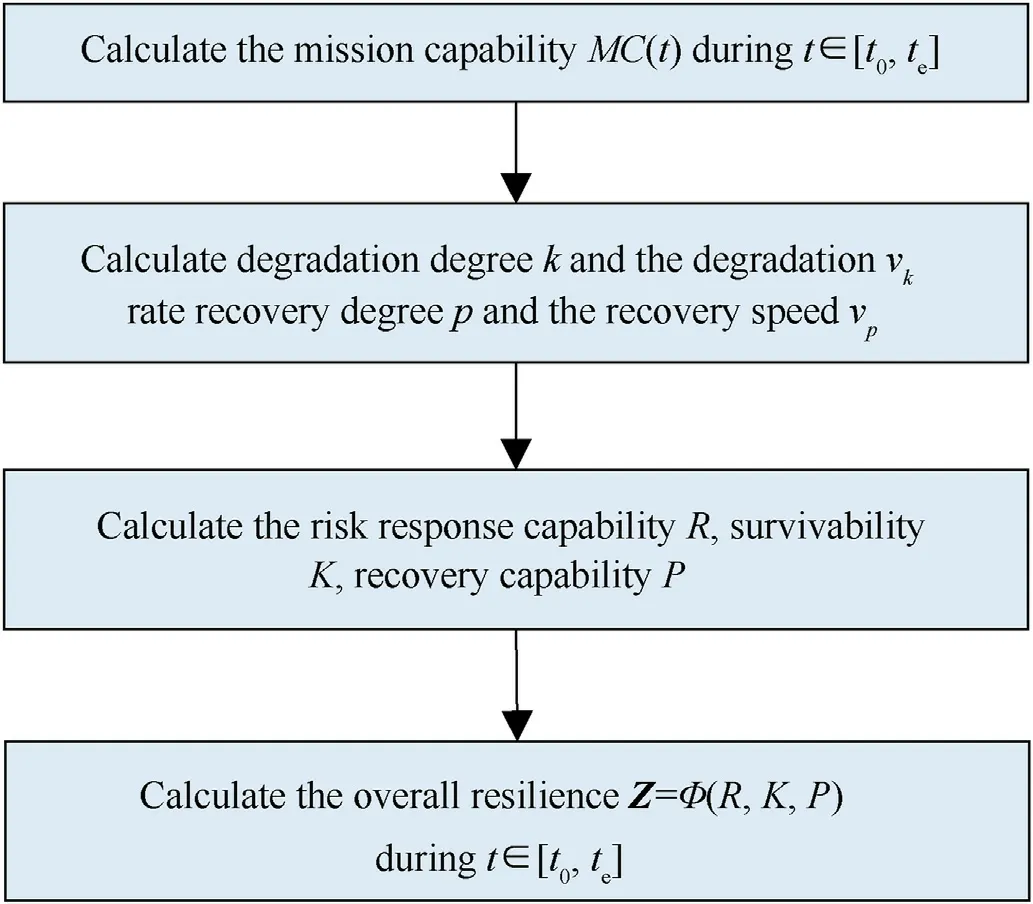
4. Case study and experimental analysis
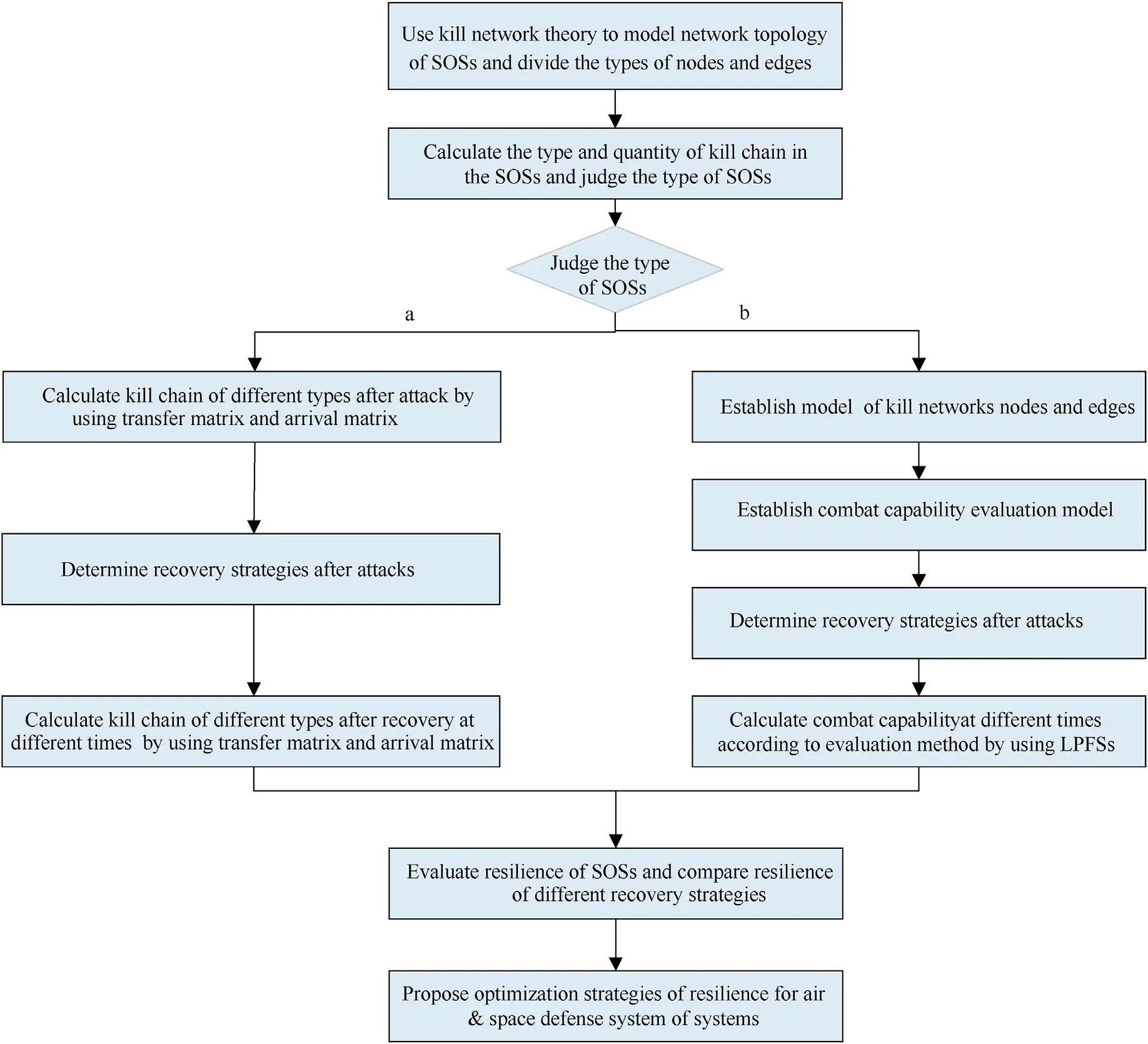
4.1. Scenario settings
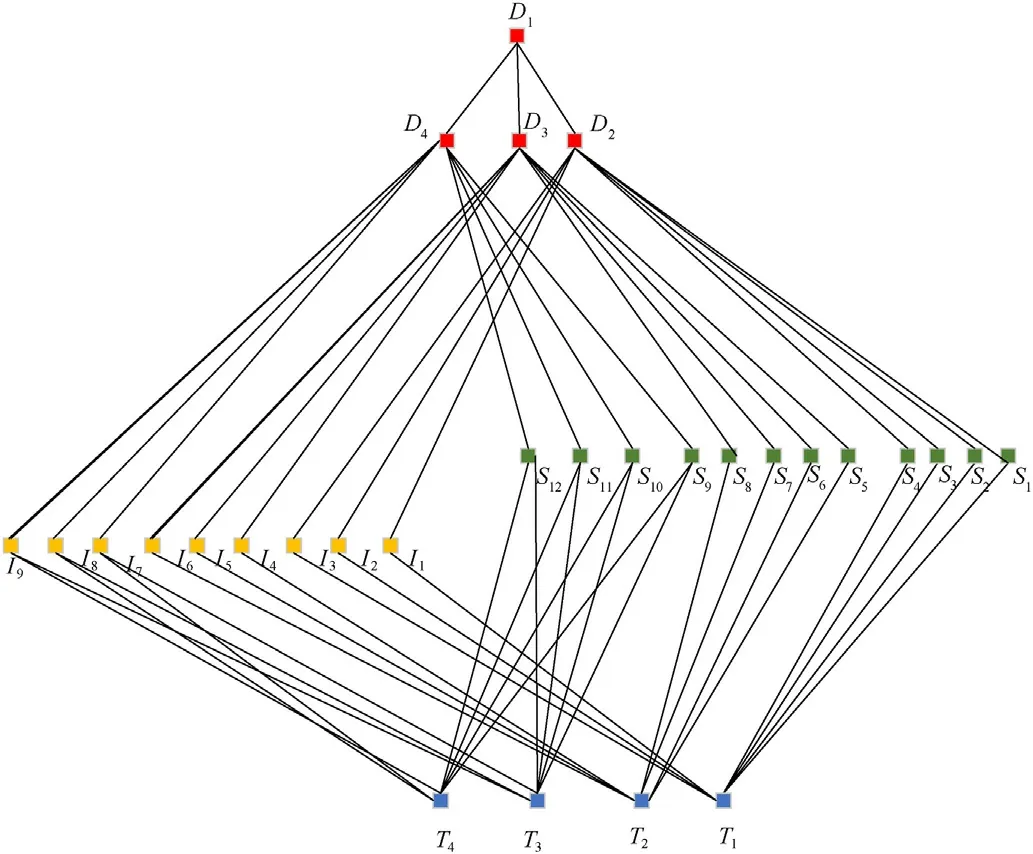
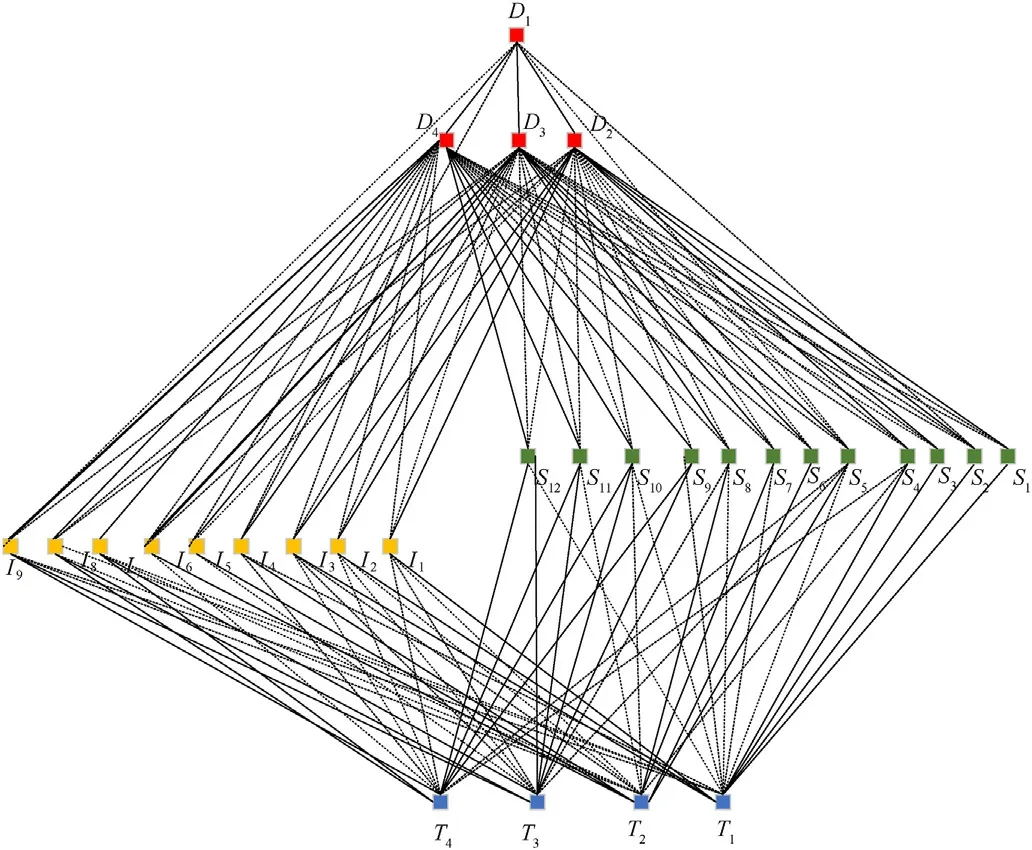

4.2. Experimental design and result analysis


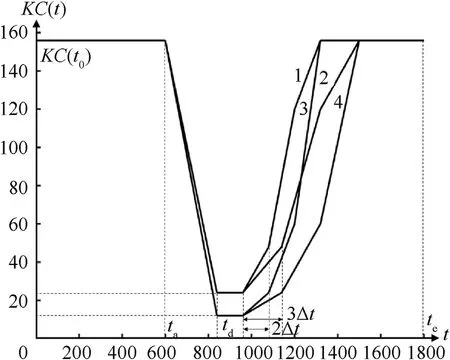
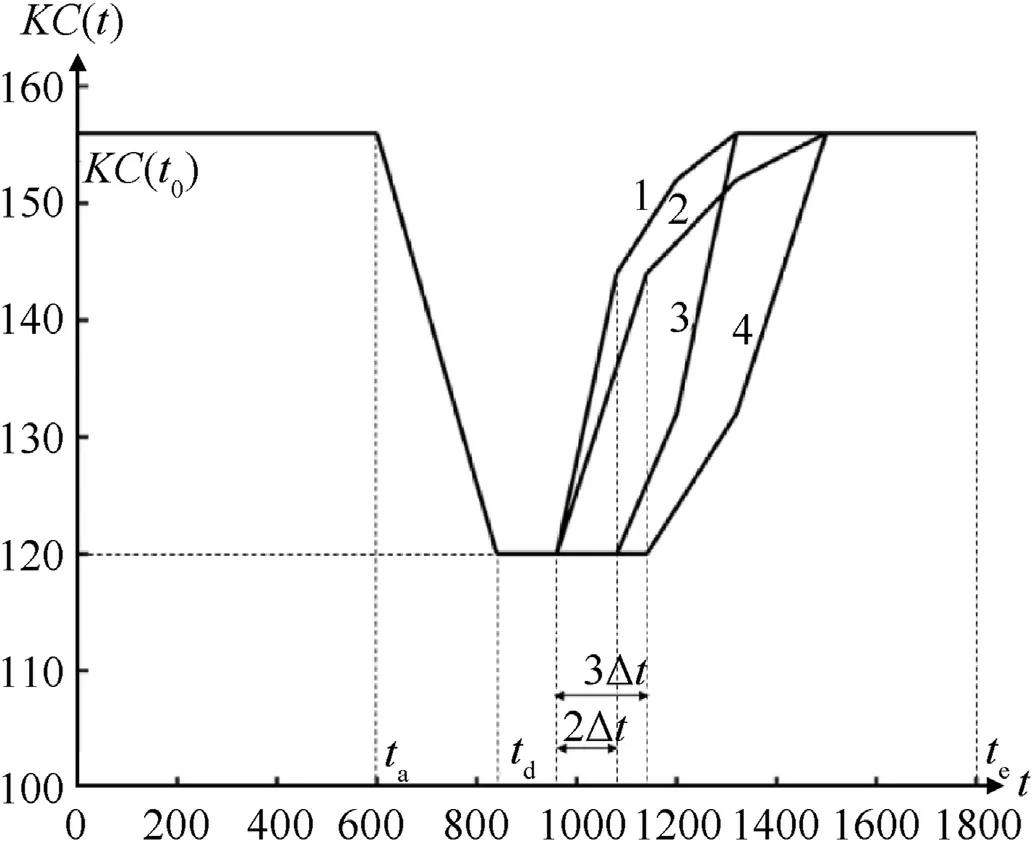

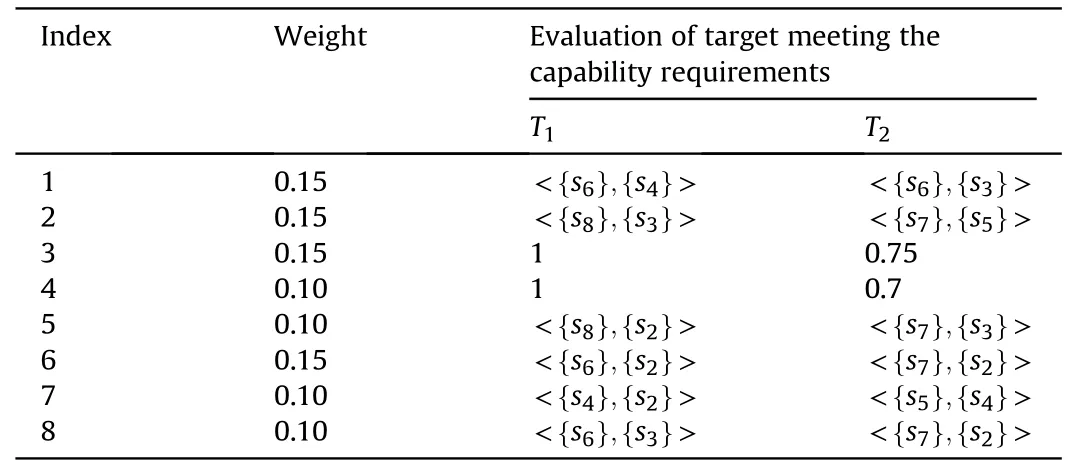
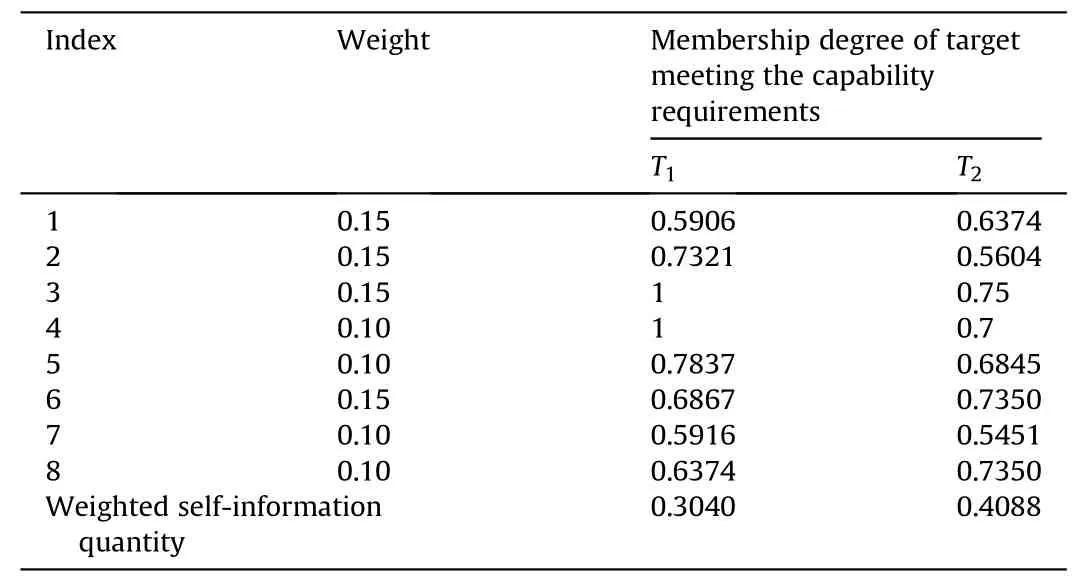

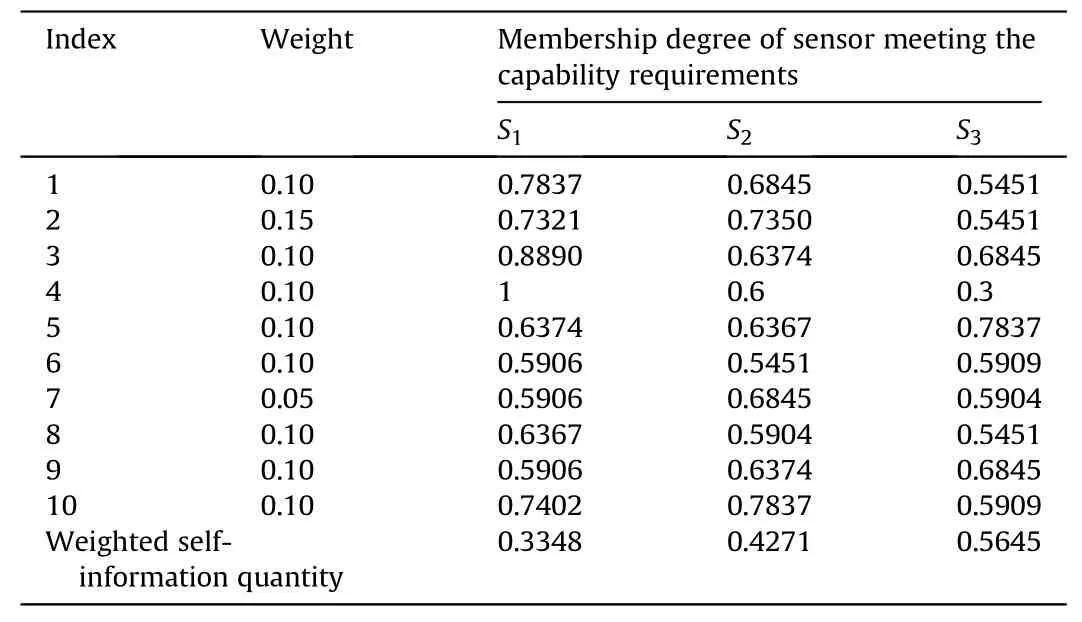
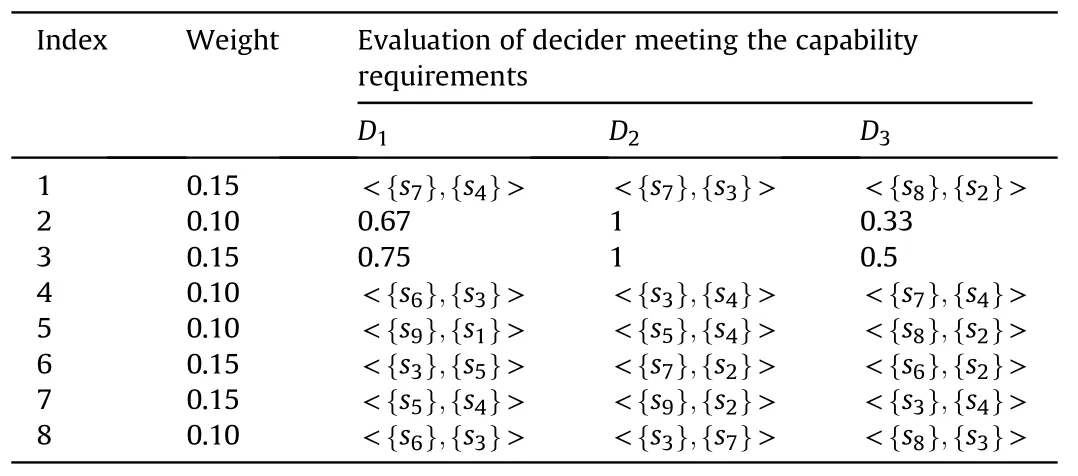



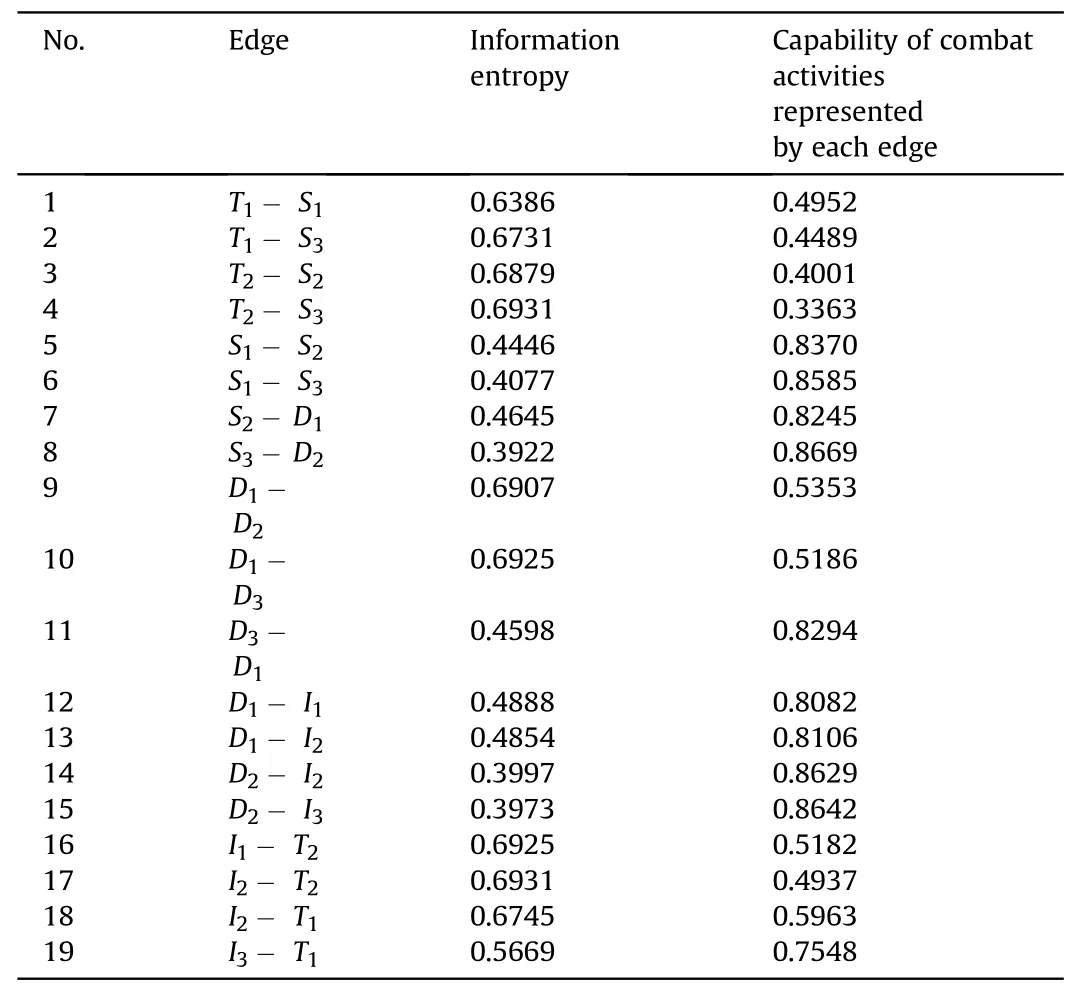

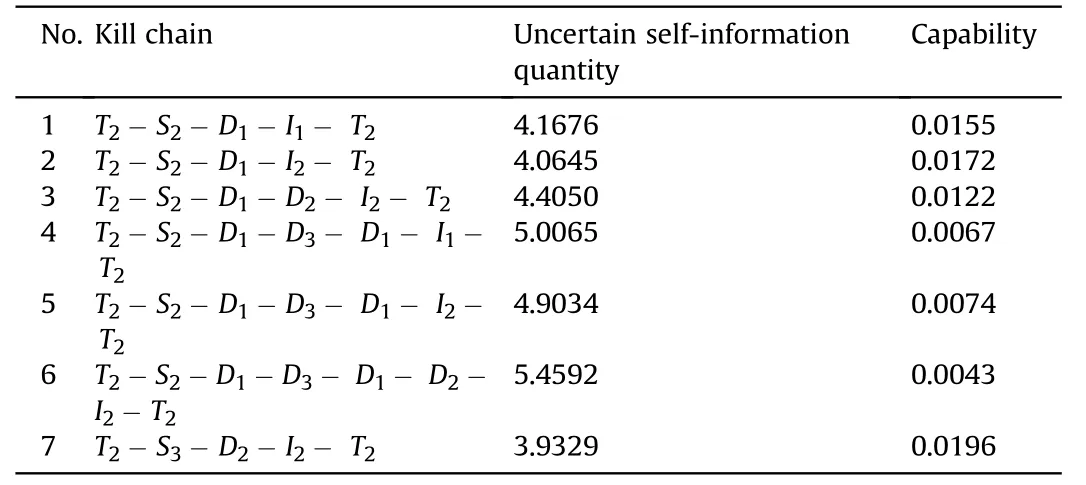

4.3. Optimization strategies
5. Conclusions
- Defence Technology的其它文章
- Camouflaged people detection based on a semi-supervised search identification network
- A novel modification method for the dynamic mechanical test using thermomechanical analyzer for composite multi-layered energetic materials
- An improved SLAM based on RK-VIF: Vision and inertial information fusion via Runge-Kutta method
- Shock response of cyclotetramethylene tetranitramine (HMX) single crystal at elevated temperatures
- A super resolution target separation and reconstruction approach for single channel sar against deceptive jamming
- Study on jet formation behavior and optimization of trunconical hypercumulation shaped charge structure

